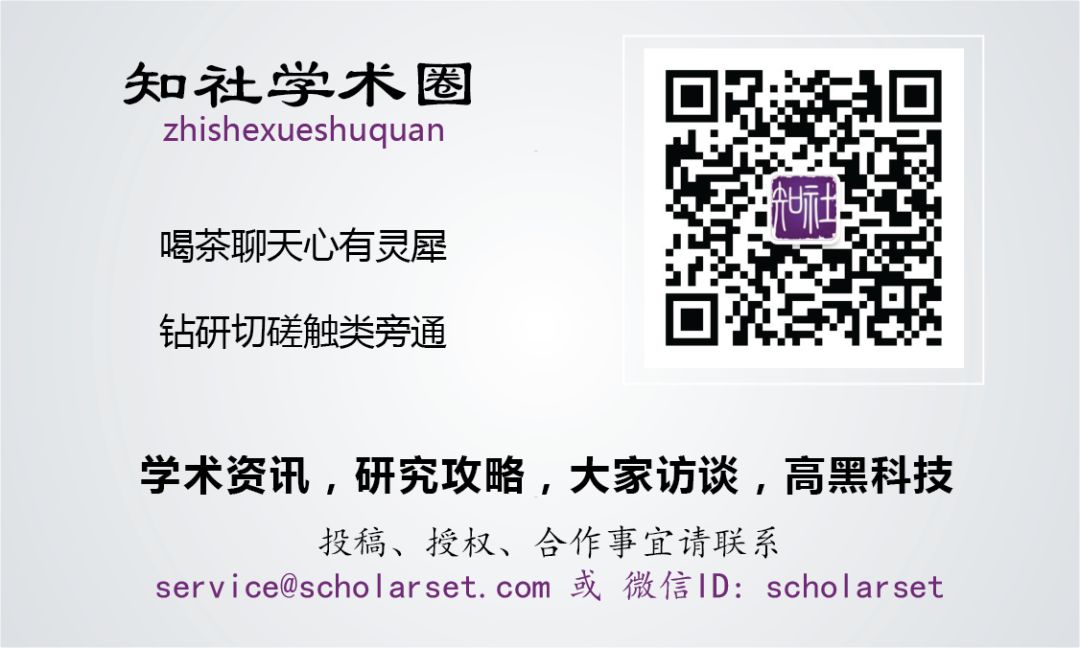Public academic platform initiated by overseas scholars
Sharing information, integrating resources
Exchanging academic ideas, occasionally enjoying the breeze

Today, the journal Light: Science and Applications, under Nature, published an article titled “wired whispering-gallery-mode sensor for thermal sensing and aerial mapping” from the research groups of Professor Lan Yang from the Department of Electrical Engineering and Professor Chen Yang Lü from the Department of Computer Science at Washington University in St. Louis, USA. This work successfully realized the first wireless Internet of Things device using optical microcavities as sensors, pioneering the application of ultra-sensitive optical microcavity sensors in the Internet of Things. Compared to traditional electronic sensors, optical microcavity sensors will bring breakthroughs in high-precision measurement applications in the Internet of Things.
The Internet of Things (IoT) is based on a large number of spatially distributed wireless sensing devices. Utilizing the Internet, they can generate, exchange, and analyze data, achieving real-time interconnectivity of a vast number of ordinary objects. For the past 20 years, the IoT has been changing our way of life and has been widely applied in environmental monitoring, medical monitoring, smart cities, and precision agriculture. So far, the sensors used in the IoT field have mainly been based on electronic semiconductor devices. In recent years, microcavity photonics has achieved a series of scientific breakthroughs in the sensing field, especially in high-precision and high-sensitivity measurements (e.g., nanoparticle detection). Moreover, unlike electronic sensors, which are easily disturbed by external magnetic fields and other environmental factors, optical sensors have the advantage of electromagnetic immunity, making them suitable for extreme working environments. Therefore, microcavity photonic sensors have immense potential in the IoT field.
The optical wireless sensor proposed in this work is based on a whispering-gallery-mode optical microcavity. This sensor is only micrometer-sized and possesses an extremely high quality factor, thus having extremely high sensitivity. However, introducing this optical microcavity sensor into the application field of the Internet of Things requires overcoming two major obstacles: (1) how to ensure the stability of input laser coupling, and (2) how to embed large laboratory platform devices such as tunable lasers, oscilloscopes, waveform generators, photodiodes, and control computers into an embedded system the size of a mobile phone.
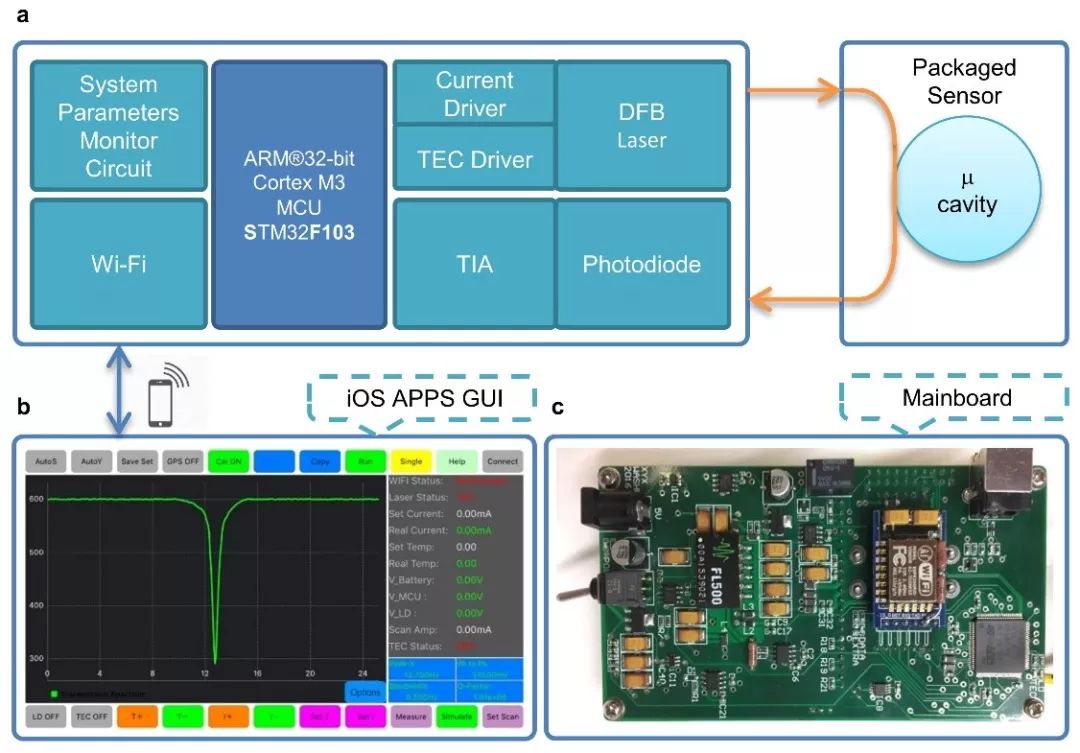
Figure 1
In Figures 1 (a) and (c), it can be seen that the system uses a distributed Bragg reflector laser as the light source, and the tuning of the device is performed through a high-precision constant current source circuit and a thermoelectric cooler temperature control circuit. The laser enters the coupled packaged optical microcavity sensor through optical fiber, and the output end is connected to a photodiode detector, which then converts the photocurrent signal into a voltage signal through a transimpedance amplifier circuit and is collected by an analog-to-digital converter. The brain of the entire system uses the STM32F103 microprocessor chip from STMicroelectronics, which regulates the temperature, current, and voltage of the laser and controls the WiFi module used to connect to the network. Figure 1 (b) shows that the entire IoT sensing device is controlled by a custom-designed Apple mobile application. Taking advantage of the wireless Internet, the device can achieve global real-time control via mobile phones once connected to the Internet. The software named “microCavity” can be downloaded from the Apple App Store. This application needs to be used in conjunction with the device and also incorporates a demonstration function that can simulate the transmission spectrum of the optical microcavity sensor and various animation simulation effects.
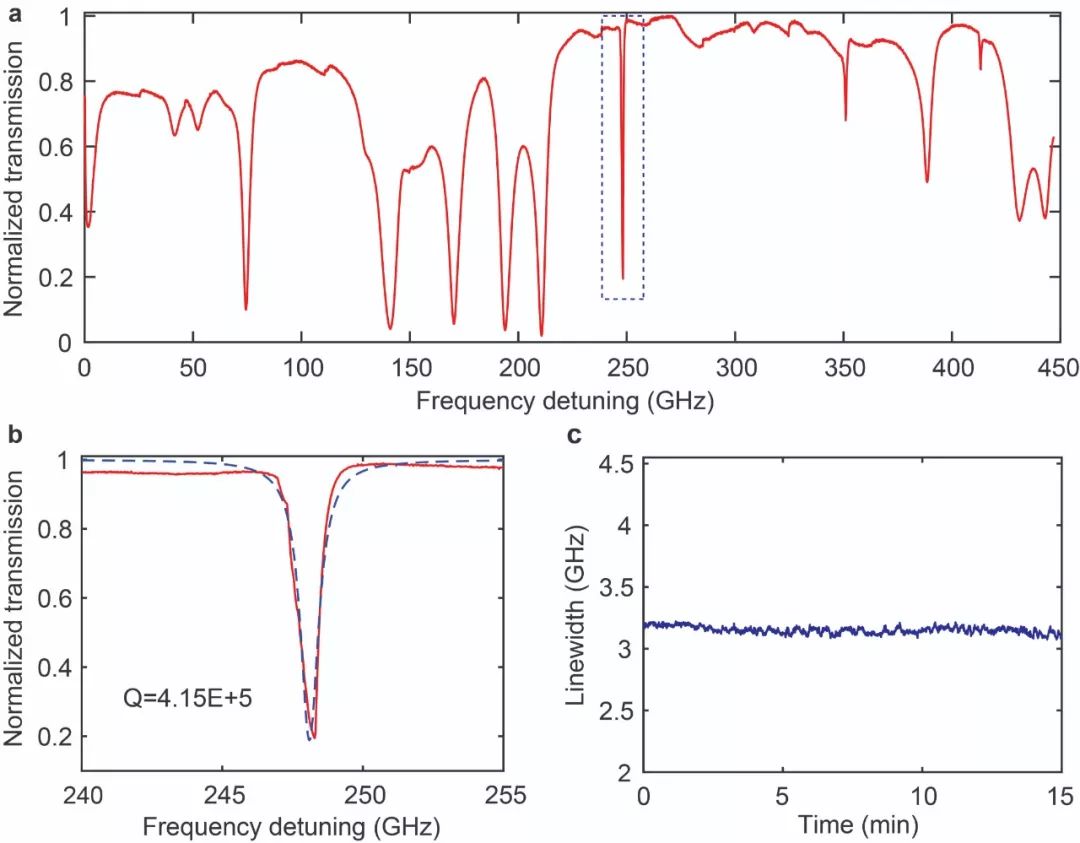
Figure 2
Figure 2 (a) shows the spectral width of 450GHz obtained from the optical microcavity sensor spectrum controlled by the APP. We can observe optical modes of different quality factors. Figure 2 (b) shows a mode with a quality factor on the order of 10^5, which is the mode selected during operation. Figure 2 (c) demonstrates the stability of system control over the mode line width for 15 minutes.
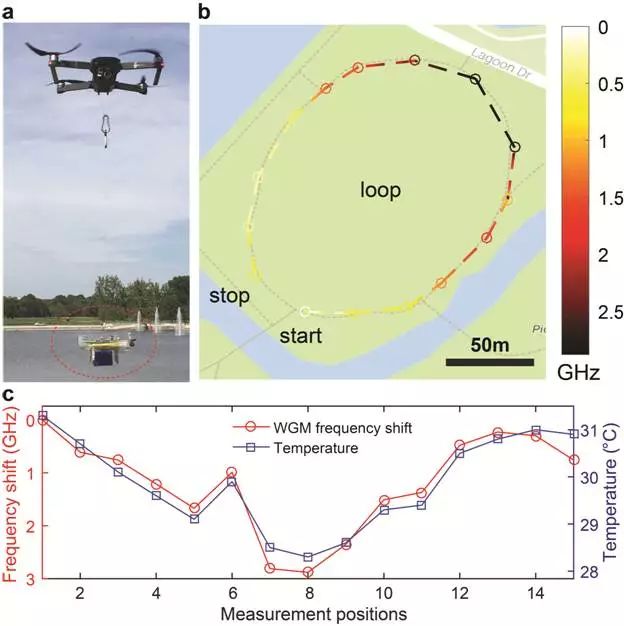
Figure 3
Figure 3 shows the temperature change curve collected by the wireless IoT optical sensing system on June 18, 2017, in St. Louis, USA. The system was placed on the exterior wall of a building, and the control of the system along with the optical transmission spectrum and mode movement calculations were achieved through mobile APP wireless control, comparing with the data collected from commercial thermometers.
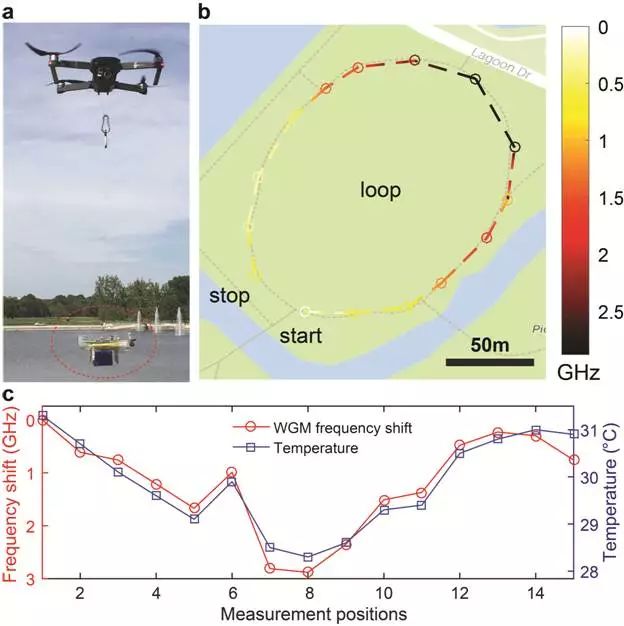
Figure 4
Figures 4 (a) and (b) show the temperature distribution scan experiment conducted using a DJI Mavic drone carrying the system in the picnic area of Forest Park, St. Louis, USA. From Figure 4 (c), we can observe the temperature gradient distribution in that area.
The first author of this article is PhD student Xiangyi Xu from the Department of Electrical and Systems Engineering at Washington University in St. Louis, and the corresponding author is Professor Lan Yang. The collaborating professor is Chen Yang Lü from the Department of Computer Science. Professor Lan Yang is an Edwin H. & Florence G. Skinner Professor in the Department of Electrical and Systems Engineering at Washington University in St. Louis, a Fellow of the Optical Society of America, and has received awards such as the NSF CAREER Award and the Presidential Early Career Award for Scientists and Engineers. Many of Professor Yang’s research results have been published in journals such as Nature, Science, Nature Photonics, Nature Physics, Nature Nanotechnology, Nature Communications, and Proceedings of the National Academy of Sciences. Professor Chen Yang Lü is a Fullgraf Professor in the Department of Computer Science at Washington University in St. Louis and an IEEE Fellow. Professor Lü is an international leader in the field of Internet of Things and real-time embedded systems and has served as the editor-in-chief of the top journal ACM Transactions on Sensor Networks and is currently the chair of the IEEE Technical Committee on Real-Time Systems.
Original link: https://www.nature.com/articles/s41377-018-0063-4
Or click the lower left corner “Read the original” to download the paper PDF.
Extended Reading
Liu Chang: Bottlenecks and Opportunities in IoT Technology
Mass Spectrometry Sniffing – How to Transform a Mass Spectrometer into an Artificial Nose?
The Singularities of Whispering Gallery, Professor Yang’s Team Achieves Tunable Phonon Laser
npj: Machine Learning – Assisting Efficient Spectroscopic Measurement
Chinese Scholars’ Ultrasonic Neural Control Based on Mechanical Sensitivity Ion Channels
This article is a featured content of NetEase News – NetEase Account “Each Has Its Own Attitude”
For media reprint authorization, please see below
